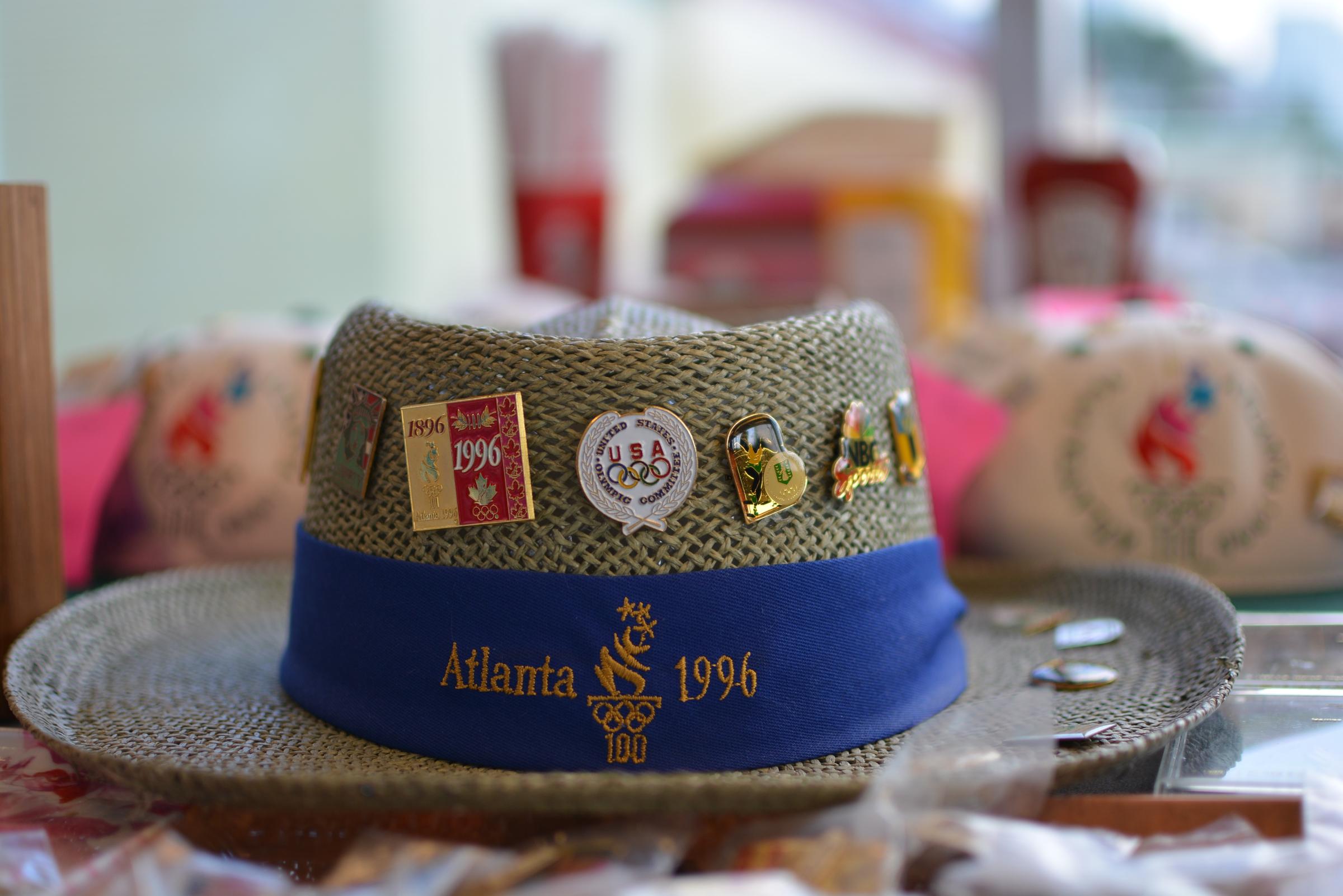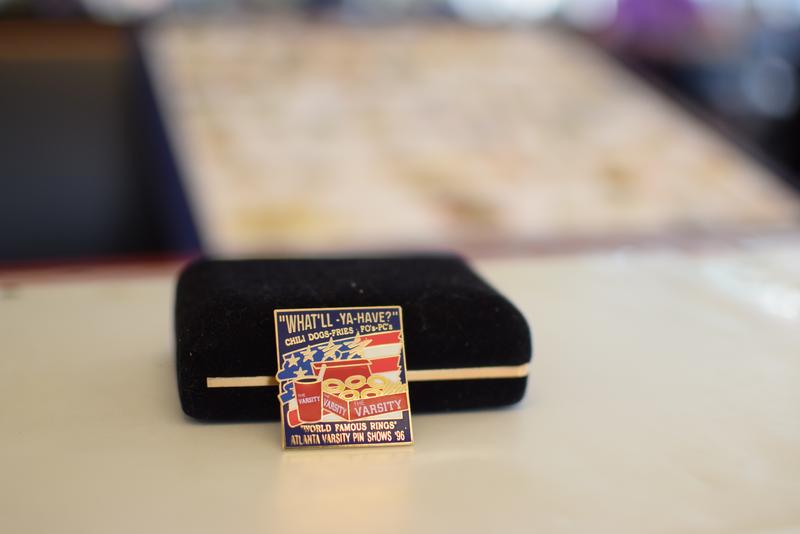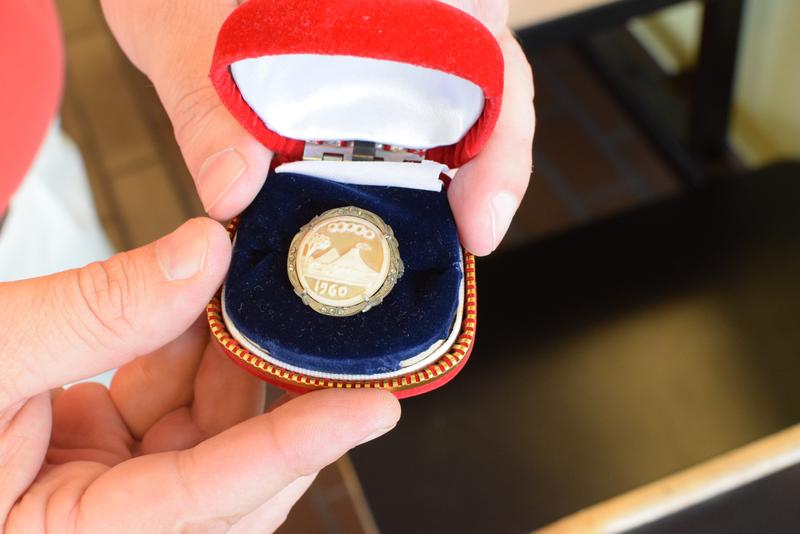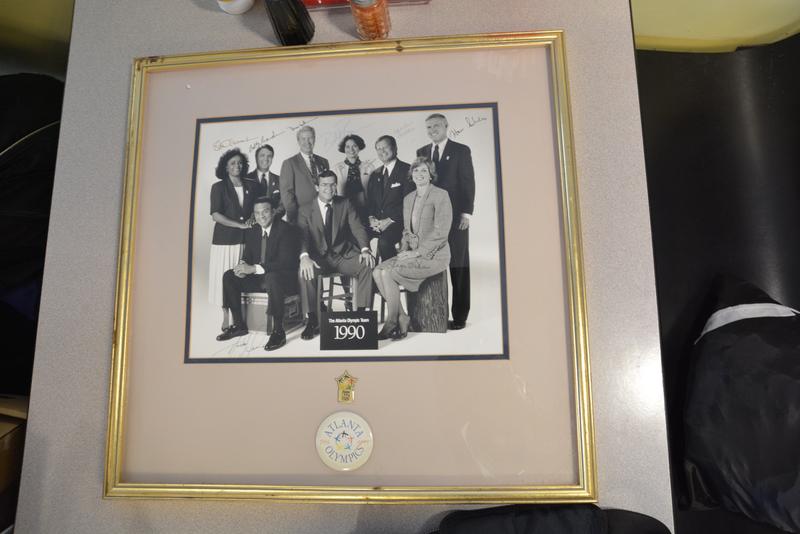This story is part of “Atlanta Remembers: The 1996 Olympics,” WABE’s series on the impact of the 1996 Summer Olympics on Atlanta, 20 years later. For more stories, click here.
Swapping Olympics pins is almost as much a sport as the games themselves. There are legends, bids and winners. Each enameled prize symbolizes a place in time, a memory or a new friendship. For some people, Olympic pin collections are badges of honor representing their archival knowledge of the modern Olympic Games. For the rest of us, here are some interesting tidbits that you may not know about the time-honored tradition of Olympic pin trading and collecting.
1.The Varsity Pin, an Atlanta legend
In celebration of the 1996 Olympics in Atlanta, famed restaurant The Varsity created its own enameled pin featuring a box of Varsity “world famous rings” and a soda. Allegedly, the restaurant was forced to stop manufacturing and selling the pins because the onion rings on the pin too-closely resembled the Olympic rings.
Now the pin is among the hardest to find from the 1996 Olympics. Especially the pin that was made for Varsity staff members, which is the same as the fabled original pin, but with the word “staff” emblazoned on it. If you find one, it could be worth about $125, said Atlanta pin collector and seller Ted Prinsen.
2.There’s a lore to swapping pins.
Legend often accompanies pin trading. The unicorns of the pin trading world are spoken about, but rarely seen, making the hunt more intriguing for the collector. An original Atlanta Olympics bid pin worn by the women of the Atlanta Committee for the Olympic Games, which looks more like a broach than a pin, has only been seen once by pin collector and Olympics blogger Nick Wolaver, who has been collecting pins for over 30 years.
Another pin created for the city of Nashville during the bidding process for the 1996 Olympics supposedly exists, according to some pin collectors, but has never been seen by Wolaver’s eyes. “I only know a couple of people who claim to have seen it, but they won’t show it to me. So it’s that rare, or it could be a myth,” Wolaver said.
3.There’s a convention to swap and sell Olympic pins, and it’s coming to Atlanta.
Leftover pins from the 1996 Atlanta Olympics? Swap them or sell them Oct. 7 at the Olympin Collectors’ Memorabilia Show at the Omni Hotel in Atlanta.
Each show is huge and has millions of pins to choose from, according to pin collector Frances Carey.
Carey, who has a large collection of Olympic pins and memorabilia in her own Olympic room in her house, “really didn’t know the scope of Olympic pin collecting” until she attended an Olympin show in Lake Placid, New York.
“We had at least 17 different countries.,” she said. “Russia comes. China comes. They are big pin traders.”
Can’t wait for October? Don’t worry. On the third Wednesday of each month, pin enthusiasts meet at 4 p.m. at the Varsity to trade and sell their Olympic pins and goods.
4.Pins are worth more around the time of the Olympic Games, but don’t quit your day job.
Some Olympics pins can be worth several hundred dollars, but those are few and far between, said Prinsen. He estimates that the 1996 Atlanta Olympics Macy’s Day Parade pin would be a covetable prize for the right buyer and may bring in a few hundred dollars.
In some cases, monetary value can come down to how long or hard a collector has been searching for a particular pin. In one case, Lilburn resident and Olympics pin collector Scott Reed was offered $2,500 for a 1984 Los Angeles pin that the collector had been seeking for about 30 years.
“The real value is based on what collector places on it,” Reed, whose personal collection spans all 196 countries, said.
5.It’s more about the memory and the connections than a pin’s worth though.
The memories and stories that accompany a pin are where the worth really lies.
“Half of the hype of everything that’s sold in here is they’ve all got stories that go with it,” Prinsen said. “You’re buying the story. You’re not buying the pin.”
And there are so many stories. Pin swaps are just as much about show and tell as they are about acquiring a new piece for a collection.
Atlanta’s pin collectors show up at the Varsity each month with their most prized items to tell others the backstory of how they stumbled upon the find.
Recently, pin trader Randy Parsons found a framed and autographed photo of the Atlanta Olympics committee complete with a pristine Olympics pin. He snapped it up at an estate sale. “It’s a nice, classic, kind of a keeper that shows the beginning of the Atlanta movement,” Parsons said.
But Parsons most enjoys the camaraderie and friendships that come along with pin trading, especially at the Olympic Games. This year will be his 10th time attending the games.
“By being a pin collector, I can go anywhere in the world and when I see a guy with two or three four or five pins on his hat, it’s an open invitation to come inside his comfort zone and say ‘Hi, my name is Randy. Would you like to trade a pin?’ … It’s the spectator sport of the fans … It’s a social experience.”













